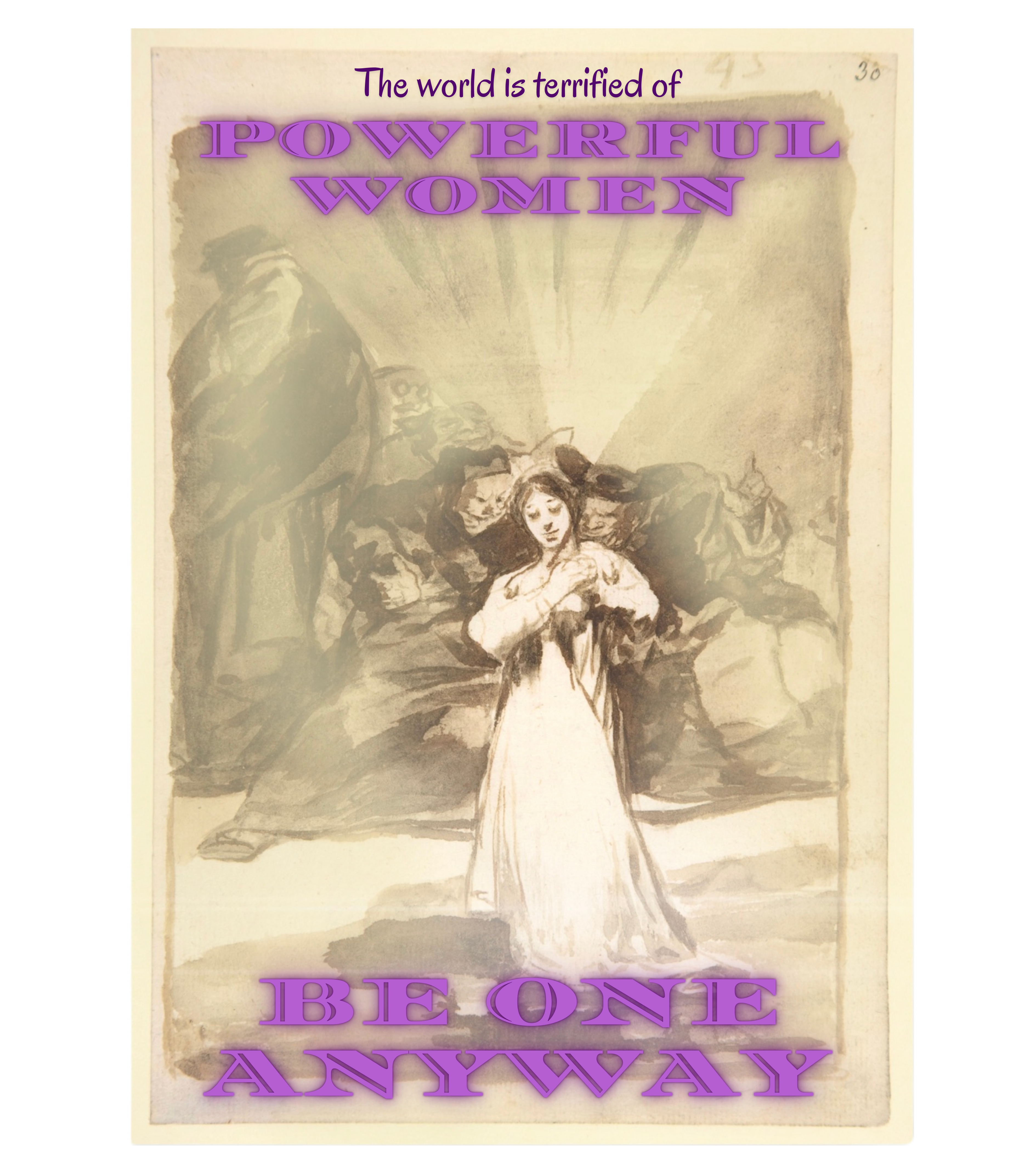
Shop Powerful Women Collection
-
Timeless Truths: Powerful Women Journal
Regular price $20.00 USDRegular priceUnit price / per -
Timeless Truths: Powerful Women Tote Bag
Regular price $25.00 USDRegular priceUnit price / per -
Timeless Truths: Powerful Women Framed Print
Regular price From $25.00 USDRegular priceUnit price / per
Timeless Truths: Powerful Women
Best antidote to the madness: power + calm = joy
There is so much powerful art from the time period when women were constantly under threat of being labeled as a witch or obsessed with dark magic. The original image from the early 19th century shows just how frightened people were of those they labeled as possessed by spirits.
We modified to blur the crowd of scared townspeople and increased the focus on the woman. Brightness was added to evoke the radiance she held within herself.
The words are a reminder that none of what we experience is new; so many central themes are just as prevalent as they were hundreds of years ago.
In Tibetan Buddhism, the color purple is used to represent the Bodhisattva, a being who has attained enlightenment but chooses to remain in the world to help others achieve spiritual growth.
Artwork Details:
- Based on Francisco de Goya y Lucientes' original artwork "A radiant female beset by dark spirits", 1812-20.
- The original drawing shows a woman standing with her hands over her heart and beset by a group of men in dark clothing, including a priest identifiable by his hat. Interpretations of the drawing include references to true religion or to Spain’s 1812 constitution as triumphant but threatened by the forces of evil.
- A radiant female figure beset by dark spirits; page 45 from the "Images of Spain" Album (F)
- Goya (Francisco de Goya y Lucientes) Spanish, ca. 1812–20
- Demonstrating the thematic connections among Goya’s projects during the 1810s, this drawing has much in common with plate 79 from The Disasters of War (see 22.60.25(79)). In the print the radiant woman is on the ground, whereas in this drawing she stands with her hands over her heart and is beset by a group of men in dark clothing, including a priest identifiable by his hat. Interpretations of the drawing include references to true religion or to Spain’s 1812 constitution as triumphant but threatened by the forces of evil.
Shop More Timeless Truth Collections
-

Timeless Truths: A Labour of Love
Artwork Details:- Based on the original art "A Labour of Love" by...
-

Timeless Truths: And She Was a Witch
Artwork Details:- Based on the original art "And She Was a Witch"...
-

Timeless Truths: Be Where Your Feet Are
Dr. Jen's Description: Choose wisely. July Bean's Description: When Dr. Jen and...
-

Timeless Truths: On to Liberty
Artwork Details:- Based on the original art "On to Liberty" by Theodor...
-

Timeless Truths: Polyhymnia
Artwork Details:- Based on the original art "Polyhymnia" by Joseph Fagnani, 1869. ...
-

Timeless Truths: Scars are Stars Revealed
Dr. Jen's Description: Bravely, clearly, and completely. #noshame #lightbringslight July Bean's Description:...
-

Timeless Truths: Two Women
Artwork Details:- Based on the original art "Two Women" by Paul Gauguin,...
-

Timeless Truths: Unapologetically Ambitious
Jen's Description: Ferociously simple, make the dissonance work. July Bean's Description: With...
-

Timeless Truths: Daughters of Jerusalem
Artwork Details:- Julia Margaret Cameron British, born India, 1865- Based on the original...
-

Timeless Truths: Lady Lilith
Artwork Details:- Dante Gabriel Rossetti British, 1867- Based on the original artwork...
-

Timeless Truths: A Rose
Artwork Details:- Based on the original art "A Rose" by Thomas Anshutz,...
-

Timeless Truths: Original Untitled Artwork
Artwork Details:- Original untitled artwork by Orazio Borgianni, 1610- Head studies such...
-

Timeless Truths: Pandora
Artwork Details:- Based on the original artwork "Pandora" by Odilon Redon, 1914. ...
Shop Other Collections
-

Main Character Energy!
These stars may not have universal recognition, but they all hold a...



















